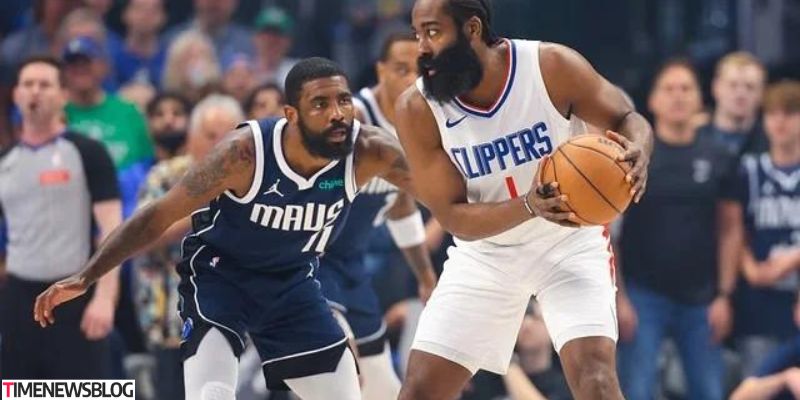In the competitive realm of the NBA, every game is more than just a contest; it’s a showcase of talent, strategy, and individual prowess. When the Los Angeles Clippers face off against the Dallas Mavericks, fans and analysts alike watch closely to see how these two powerhouses measure up against each other. In this article, we’ll delve into clippers vs dallas mavericks match player stats, providing a comprehensive player comparison to understand team performance.
The Importance of Player Stats in Basketball
Before jumping into the specifics of clippers vs dallas mavericks match player stats debate, it’s crucial to understand what player stats mean and why they’re important. Player stats, or statistics, are numerical data that represent a player’s performance in various aspects of the game. These include points scored, rebounds, assists, steals, blocks, and more. Analyzing these stats helps fans and analysts gauge the effectiveness of players and the overall team performance in a match.
Key Metrics in Player Stats
- Points Per Game (PPG): This metric indicates a player’s scoring ability. High PPG can signify a team’s reliance on a player for offensive production.
- Rebounds Per Game (RPG): Reflects a player’s ability to retrieve the ball after a missed shot, essential for controlling possession.
- Assists Per Game (APG): Highlights a player’s playmaking ability, crucial for setting up scoring opportunities.
- Steals and Blocks: Measure a player’s defensive capabilities, vital for disrupting the opponent’s offense.
- Field Goal Percentage (FG%): Shows shooting efficiency, indicating how often a player successfully scores relative to the shots taken.
Spotlight on Clippers’ Key Players
The Clippers boast a roster of skilled players, each contributing uniquely to the team’s success. Understanding their roles and statistics can provide insights into their performance dynamics.
Kawhi Leonard – The Claw
Kawhi Leonard, affectionately known as “The Claw” for his defensive prowess, is a cornerstone of the Clippers’ lineup. Known for his all-around game, Leonard excels in both offense and defense, making him indispensable. His stats typically reflect a balanced contribution, with notable figures in points, rebounds, and steals. Leonard’s ability to perform under pressure is evidenced by his impressive playoff performances, where he consistently elevates his game.
Paul George – PG-13
Paul George, or PG-13, is another standout player for the Clippers. Renowned for his scoring ability, particularly from beyond the arc, George also contributes significantly on defense. His stats often highlight high points per game and notable steals, underscoring his status as a two-way player. George’s versatility allows him to adapt to different roles, whether leading the offense or supporting his teammates in defensive plays.
Role Players and Their Contributions
Beyond the star players, the Clippers have several role players who make essential contributions:
- Reggie Jackson: As a point guard, Jackson’s role is pivotal in orchestrating the team’s offense. His assists and points are crucial in creating scoring opportunities and maintaining the team’s rhythm.
- Ivica Zubac: Known for his presence in the paint, Zubac’s rebounds and blocks are vital for the Clippers’ interior defense. His ability to protect the rim and secure rebounds provides the team with more scoring opportunities.
Mavericks’ Key Players and Their Impact
The Dallas Mavericks, led by their prodigious young star, have a roster filled with talent and potential. Analyzing their key players provides a clearer picture of the team’s dynamics and strengths.
Luka Dončić – Wonderboy
Luka Dončić, often referred to as “Wonderboy,” is the heart and soul of the Mavericks. His incredible court vision and scoring ability make him one of the most versatile players in the league. Dončić’s stats typically include high points, rebounds, and assists, reflecting his multifaceted contributions. His ability to control the game tempo and create plays makes him indispensable for the Mavericks’ success.
Kristaps Porziņģis – The Unicorn
Kristaps Porziņģis, known as “The Unicorn,” brings a unique blend of size and skill to the Mavericks. Despite dealing with injuries, Porziņģis remains a significant force when healthy. His ability to stretch the floor with his shooting and protect the rim is often reflected in his points, rebounds, and blocks. Porziņģis’s versatility allows the Mavericks to exploit mismatches and create diverse offensive strategies.
Supporting Cast and Their Roles
The Mavericks’ success isn’t solely dependent on their stars; their supporting cast plays a crucial role:
- Tim Hardaway Jr.: Known for his shooting prowess, Hardaway Jr.’s three-point percentage is a testament to his ability to contribute significantly from beyond the arc.
- Jalen Brunson: As a secondary playmaker, Brunson’s efficiency is reflected in his assists and shooting accuracy, making him a valuable asset in the Mavericks’ rotation.
Head-to-Head Match Analysis: clippers vs dallas mavericks match player stats
When the Clippers and Mavericks clash, analyzing player stats and comparing key players can provide insights into how the game might unfold. Here’s a breakdown of some crucial aspects:
Scoring Leaders
In any given matchup, scoring leaders play a pivotal role. Comparing Leonard’s and George’s combined average points per game with Dončić’s and Porziņģis’s can show which duo might have the upper hand in offensive production. The offensive capabilities of these players often dictate the flow of the game, with high-scoring performances potentially swaying the outcome.
Defensive Impact
Defensive stats like steals and blocks can indicate which team might have the advantage in disrupting the opponent’s offense. Leonard and George’s defensive stats are often matched with Dončić’s steals and Porziņģis’s blocks to assess their impact on the game’s defensive aspect. The ability to generate turnovers and protect the rim can be decisive factors in close contests.
Bench Contribution
The performance of bench players can be a deciding factor in tightly contested games. Comparing the stats of the Clippers’ and Mavericks’ bench players highlights the depth and potential impact each team’s reserves have on the game. A strong bench can provide crucial support, maintaining momentum and intensity when star players rest.
Team Performance Metrics: Beyond Individual Stats
While individual player stats are essential, team performance metrics offer a broader view of the game dynamics and potential outcomes.
Offensive and Defensive Ratings
- Offensive Rating: Measures a team’s efficiency at scoring points, indicating how effectively they can convert possessions into points.
- Defensive Rating: Indicates how well a team restricts points by the opposition, reflecting their defensive prowess.
These ratings can predict the flow of the match and which team might have the edge. A high offensive rating coupled with a strong defensive rating suggests a well-rounded team capable of excelling on both ends of the court.
Rebounding and Turnovers
- Rebounding Stats: Show a team’s ability to control the boards, which can lead to more scoring opportunities and limit the opponent’s possessions.
- Turnover Stats: Reflect how well a team takes care of the ball. A low turnover rate is crucial in a tightly contested game, as it minimizes the opponent’s chances to capitalize on mistakes.
Analyzing these metrics can provide insights into which team might dominate the game’s tempo and possess an advantage in crucial moments.
Predictions Based on Stats: Who Has the Edge?
While player stats and team performance metrics provide valuable insights, basketball remains unpredictable. However, analyzing the data can help make educated predictions about the match’s outcome.
Factors Influencing the Outcome
- Recent Performance: Evaluating the recent performance of key players can indicate which team is in better form heading into the matchup.
- Injury Reports: Injuries can significantly impact the game, as missing key players can alter a team’s strategy and performance.
- Home Court Advantage: Playing at home often provides a psychological and performance boost to the home team, influencing the game’s dynamics.
Key Factors to Watch
In any Clippers vs. Mavericks game, several key factors can turn the tide:
- Three-Point Shooting Percentage: Teams with a high three-point shooting percentage can stretch the defense and create scoring opportunities.
- Free-Throw Accuracy: In close games, free-throw shooting can be the difference between victory and defeat.
- Bench Scoring: The ability of the bench to contribute significantly can provide a crucial edge in maintaining intensity and momentum.
Conclusion: The Role of Stats in Basketball’s Intricate Dance
Player stats and team performance metrics are more than just numbers; they tell the story of a game and its players. As the Clippers and Mavericks face off, keeping an eye on these stats will provide a deeper understanding of the match and its potential outcome. Whether you’re a casual fan or a die-hard analyst, these figures are crucial in appreciating the game’s intricacies and predicting who will come out on top in this exciting NBA showdown.
Remember, while stats give us a preview, it’s the players on the court who turn predictions into reality. So, as the clippers vs dallas mavericks match player stats prepare for their next encounter, get ready to witness basketball at its finest, with every pass, shot, and defensive stop potentially swaying the game’s direction.
For More Visit Timenewsblog








